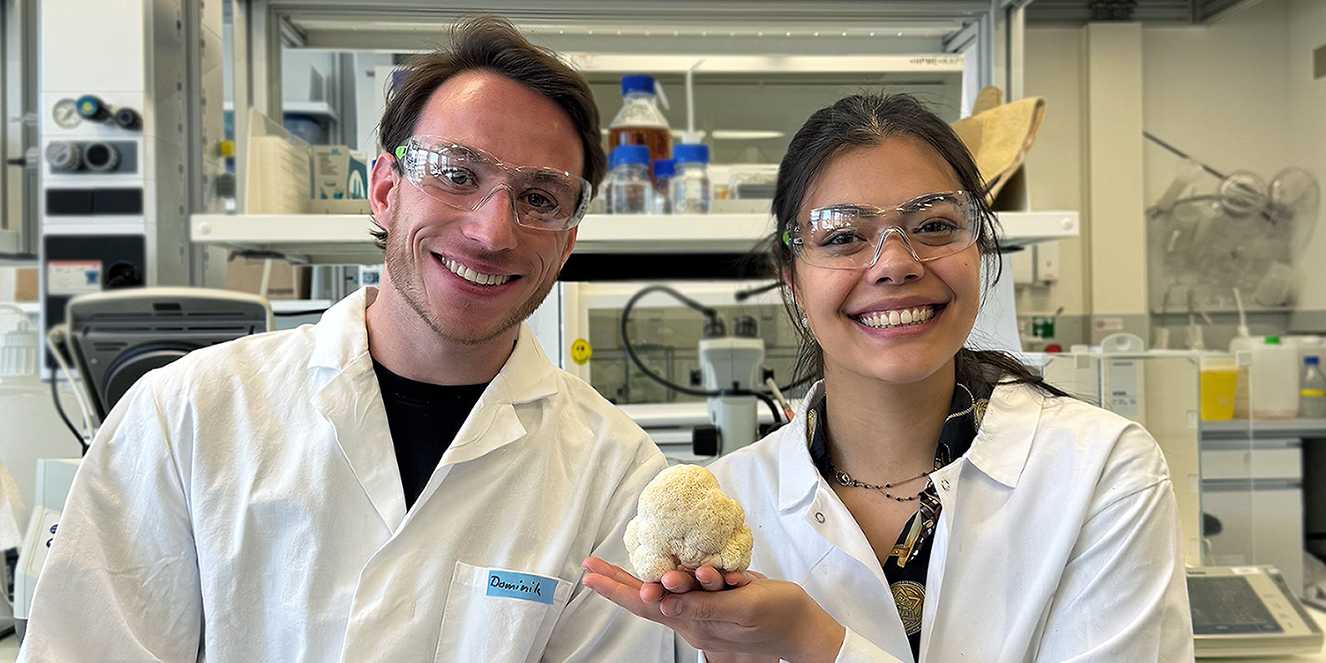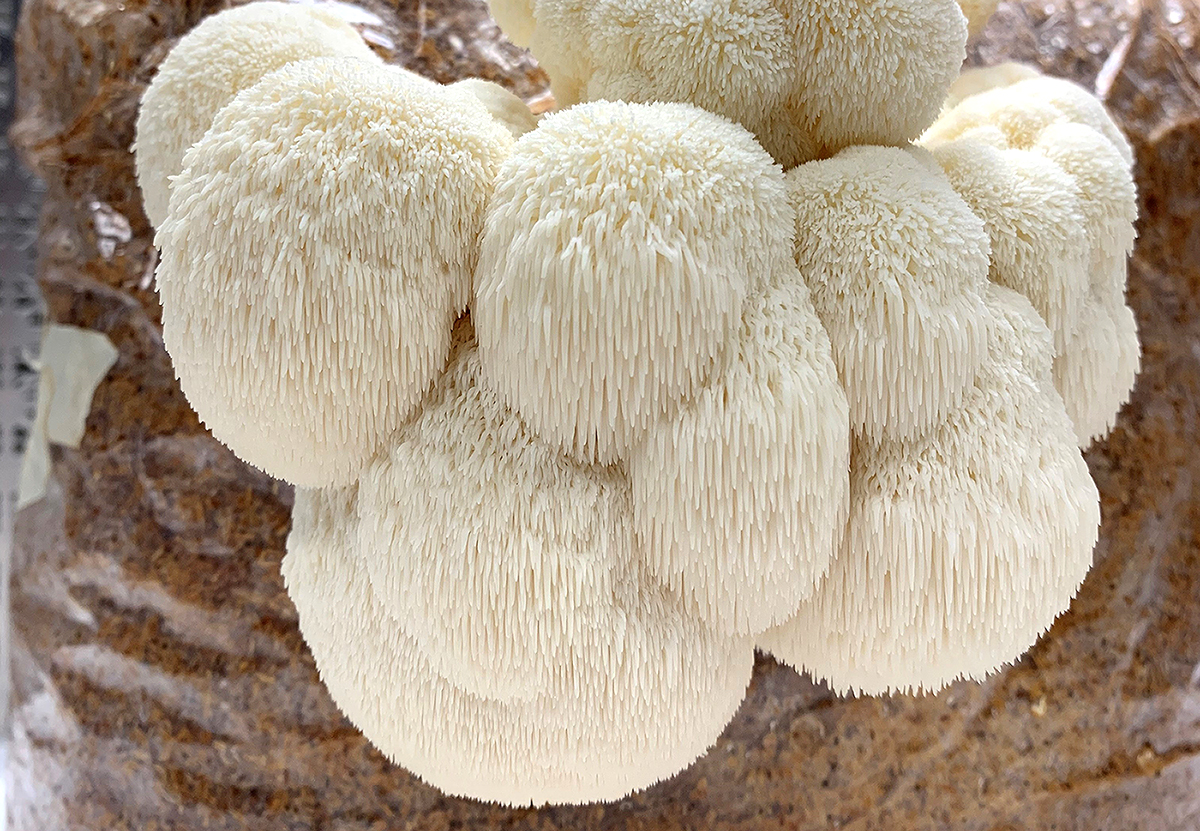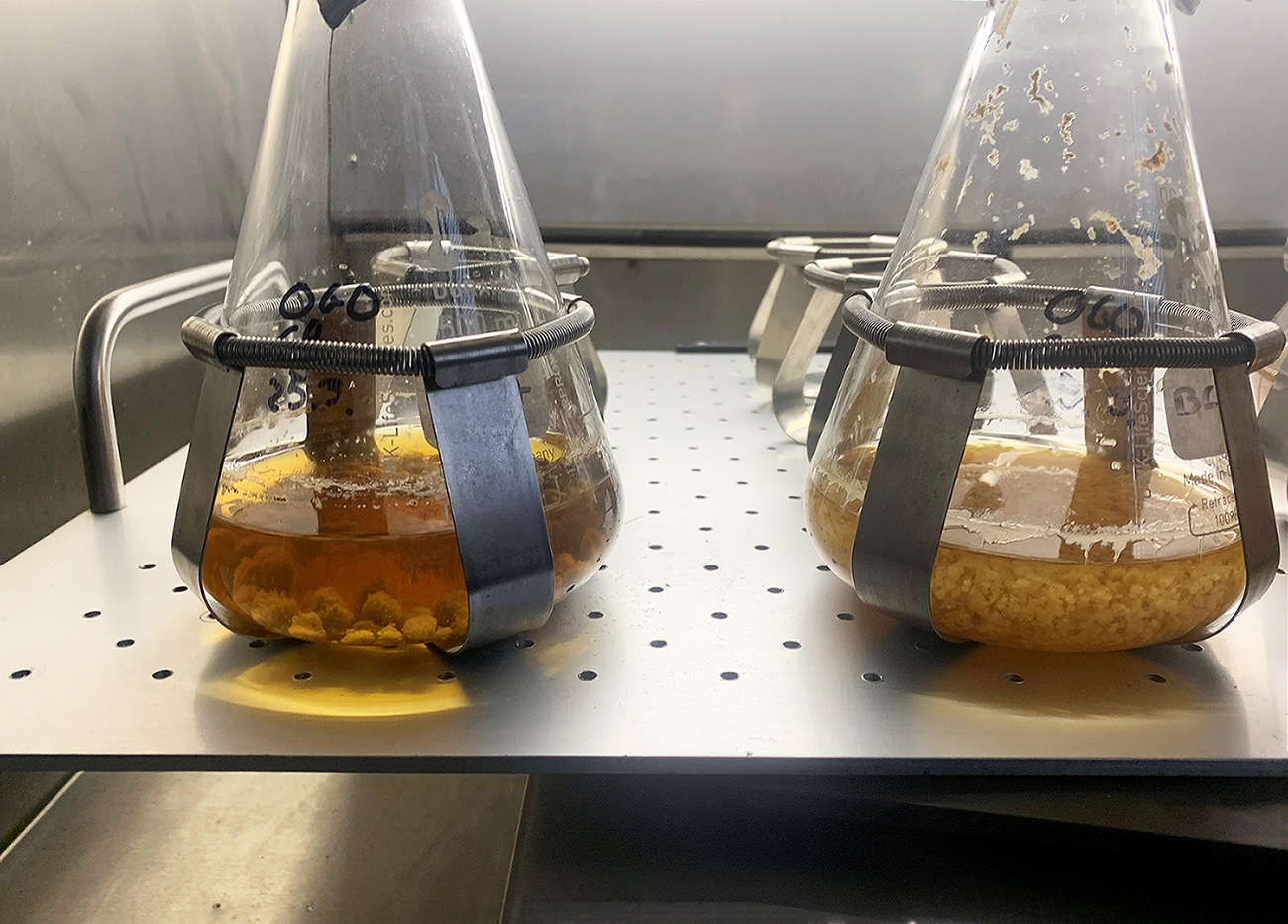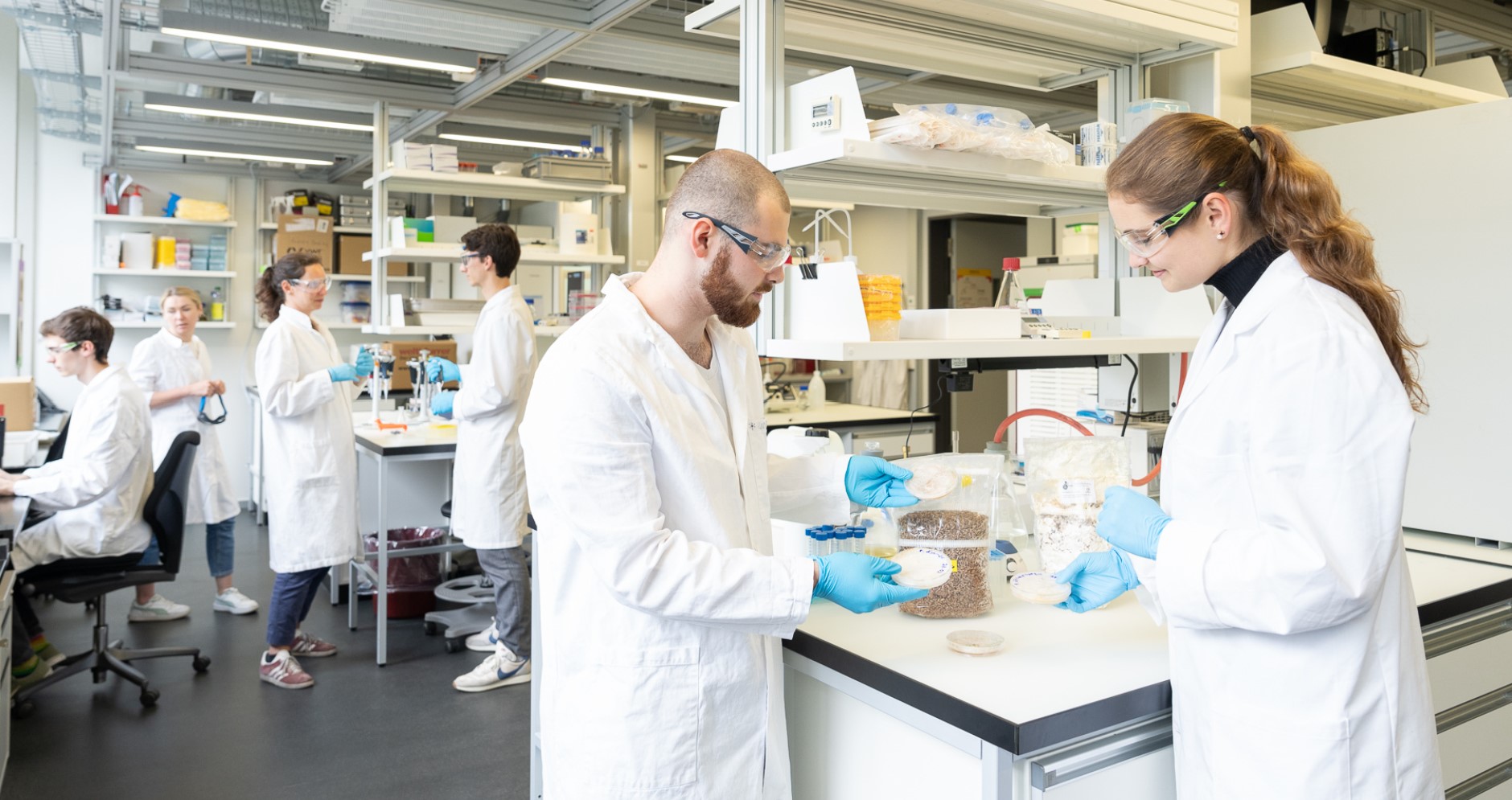
“Independent research offers a counterbalance to our studies”
Dominik Bögli and Maylin Blunier, students of Interdisciplinary Natural Sciences and Biology, are eager to satisfy their thirst for knowledge both in the lecture halls and beyond. In the newly established Life Science Lab of the ETH Student Project House, they are cultivating special fungi that not only taste good but also contain neuroprotective natural compounds. The first products of their project can now be ordered on their website.
Maylin, you are a Master's student in Interdisciplinary Natural Sciences at D-CHAB and Dominik, you switched from Interdisciplinary Natural Sciences to Biology and will soon be doing your Master's there too. How is it that you spend your free time researching fungi in the Life Science Lab provided by the Student Project House?
M: It started as a joke between friends. We gave Dominik a mushroom growing kit as a present. It didn't work very well, and Dominik thought he could do better. We couldn't buy the mushrooms on the open market, so we wanted to try growing them ourselves. During our research, we came across some little-researched active natural products of the fungi. We are both curious by nature. We simply found a blind spot in research and wanted to know what was behind it…and the mushroom also tastes super good.
You have chosen a special mushroom: the Lion’s Mane Mushroom – why?
D: The lion’s mane mushroom is not only a delicious edible fungus but also contains Erinacine and Hericinone A, a compound believed to have neuroprotective properties. We aim to cultivate this mushroom as a food product using a natural and sustainable substrate, such as brewing by-products. In a second phase, we plan to isolate the active compound on a larger scale and make it available for research purposes.

Is this already being done on an industrial scale somewhere?
M: Not really. This tree fungus grows very slowly— It takes at least eight weeks before it can be harvested and even then the harvest is rather small compared to other edible mushrooms. That makes it expensive. Extracting its active compounds is even more costly, and synthesizing them would be extremely complex. As a result, its bioactive natural products remain largely unexplored. We'd like to change that."
D: We also see it as an advantage if we could produce the natural compounds and the edible mushroom directly in Switzerland. That would be more sustainable.
What challenges do you face in your project?
M: Well, isolating and analyzing the bioactive natural product is not easy. For example, I have hardly any experience with mass spectrometers and there are often long waiting times for a slot. Last but not least, sterility is a critical point in cultivation.
D: Apart from that, it is difficult to keep up with the project alongside the stressful everyday life of studying. Still, I think independent projects like this offer a counterbalance to our studies, which often revolve around lectures and curriculum-based lab work. Another aspect is the financial one. If we were to scale up the project at some point, we would need more funding. For now, we’re fortunate to have support from the Student Project House.

Indeed, your project won't stay in the lab. You have now created a website and an online store. Do you have start-up ambitions?
M: Yes, the idea is on the table. Our website and store are online since May 1st, 2025. For the time being, we want to offer the mushroom in 350 g portions, also dried and ground, so that it can be used as a supplement. We then see how much interest there is and use our income for research into the isolation of the active ingredients.
Who is supporting you with the project?
D: Ulrich Genik, for example. He oversees the Life Science Lab, which we first discovered through a poster. From the very beginning, we received outstanding support there. The same goes for the Student Project House, where we benefited from free coaching and guidance. We're also collaborating with Jörn Piel's research group, who provided us with valuable advice on how to extract the bioactive compounds of the fungus.
How does the life science lab of the Student Project House work? Can you just drop by?
D: There is a booking tool for the lab workstations, but you can also drop by spontaneously. There is enough space to spread out a bit, and you can leave some of your stuff on the benches if needed. It has worked well so far. If things are labeled, nobody touches them. Everyone is very respectful.
M: Yes, it’s super pleasant to work there. You just have to bear in mind that the Life Science Lab is still quite new. As soon as you need things that go beyond the standard equipment, you have to organize them externally.

Who would you recommend the Life Science Lab to?
D: To people who are motivated to carry out projects outside of their studies that do not promise an immediate reward. There are no credits here, no laurels. But if someone wants to research something and doesn't have a lab available, it's a great place to go.
M: It’s important to see, though, that this requires a high degree of self-initiative and independent decision-making. We should also point out that the lab is more equipped for life science experiments than chemical processes. Still, there are many students from Interdisciplinary Sciences and Chemistry actively engaged in projects right now.
What has been your most important lesson learned so far?
D: Good planning is important, but you must remain flexible to be able to react. For example, we often had contamination on the agar plates because our fungus grows much slower than bacteria. Since we switched to wood as a substrate, we get nice, clean mushroom cultures.
M: I learned to work step by step and to look at time resources. I had also completely underestimated the organizational aspect. There is so much more behind a project like this!
What will your next steps be?
D: We have recently put our store online. We will see how it works, advance our research, and will try to stay on top of the latest research findings.
M: If we dream big, a collaboration or working on a study would also be very cool.
Your message to anyone interested?
D: If you want to know more about our project or the Life Science Lab, e-mail us or just drop by. They are all nice, spontaneous people in the lab. And to the engineers reading this: If you would like to work with us on a technical component for mushroom cultivation so that we can adjust various parameters in the future, please get in touch!

Further information
The Student Project House is a space built for the thriving creative community within ETH. This is where students gather, experiment, test out concepts, supercharge group projects, and build tomorrow’s ideas, today. The Student Project Lab provides different makerspaces, among them the so-called Life Science Lab which enables students to explore the life science fields and push their ideas further. Provided is a lab (bio safety level 1), equipment, and coaching for starting independent projects & experiments.